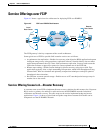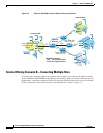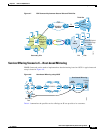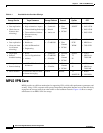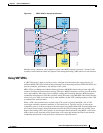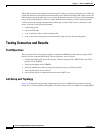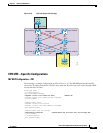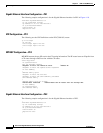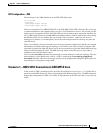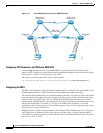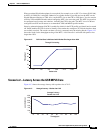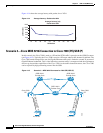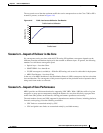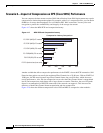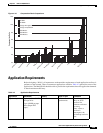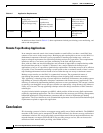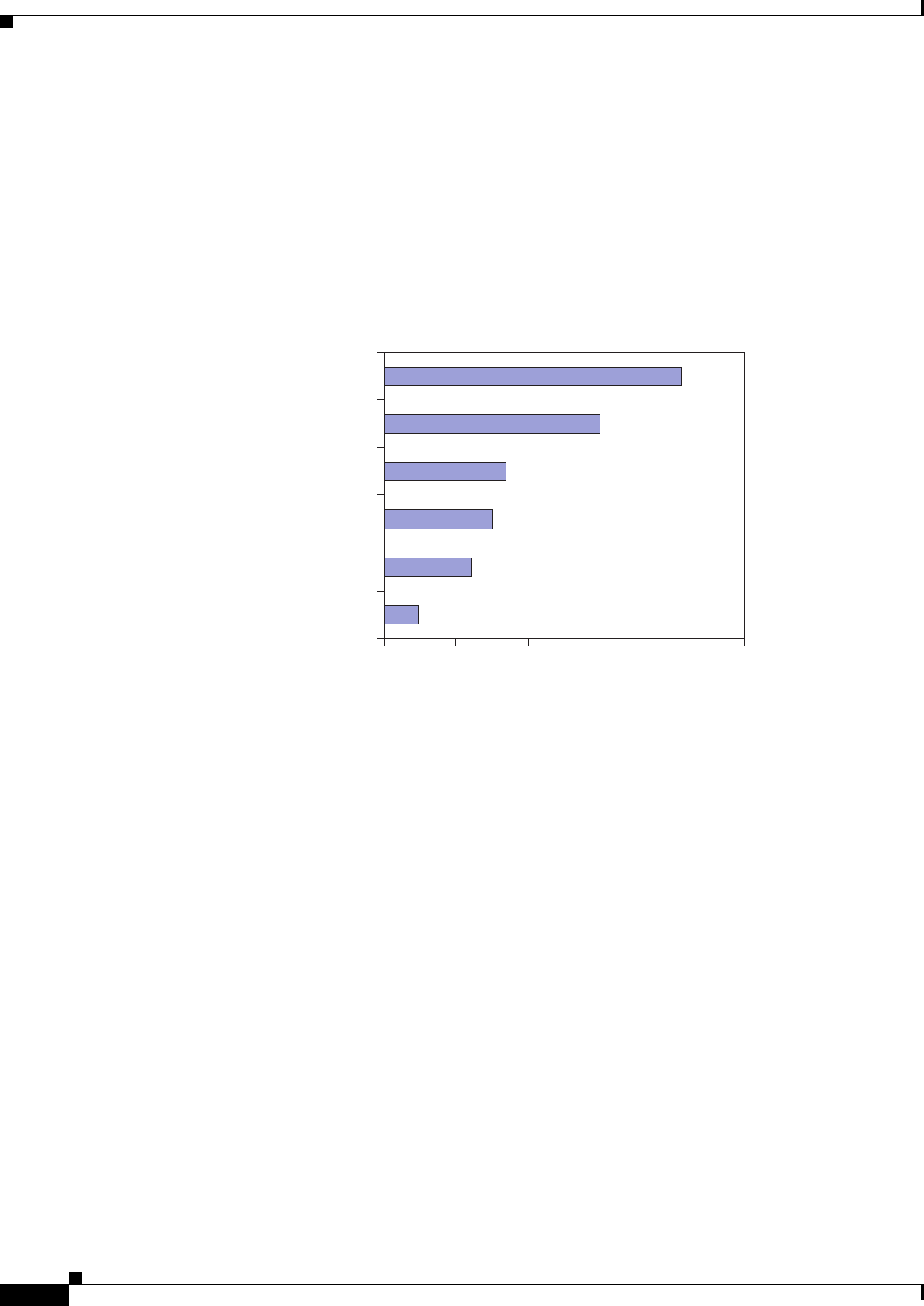
4-28
Data Center High Availability Clusters Design Guide
OL-12518-01
Chapter 4 FCIP over IP/MPLS Core
Testing Scenarios and Results
Scenario 6—Impact of Compression on CPE (Cisco 9216i) Performance
You can compress the data stream to reduce WAN link utilization. Some WAN deployments may require
compression to obtain adequate throughput. For example, with a 2 to 1 compression ratio, you can obtain
90 Mb/sec of storage data throughput over a 45-Mb/sec DS3 WAN connection. You may also need
encryption to protect the confidentiality and integrity of the storage data stream.
Figure 4-17 shows the MDS FCIP and compression latency.
Figure 4-17 MDS FCIP and Compression Latency
Another variable that affects compression performance is the IP MTU size on the FCIP connection. SAN
Extension data packets are usually the maximum Fibre Channel size of 2148 bytes. With an IP MTU of
1500 bytes, the IPS must fragment large Fibre Channel frames into two IP frames, which decreases
overall performance. Also, the data compression occurs after the Fibre Channel frame is encapsulated
into IP, and compression works better with a larger frame to examine. Therefore, the use of IP jumbo
frames is recommended for IPS FCIP connections if the network can support it. This increases the
efficiency of both Fibre Channel frame encapsulation and data compression.
Figure 4-18 shows the different compression ratio of IPS and MPS as compared to other modules.
132436
Compression Latency Comparison
47
121
151
169
300
414
0 100 200 300 400 500
FC-FC (back to back) no comp
FC-FCIP (IPS)-FC no comp
FC-FCIP(MPS)-FC no comp
FC-FCIP (MPS)-FC mode 1
FC-FCIP (MPS)-FC mode 2
FC-FCIP (MPS)-FC mode 3
usec



